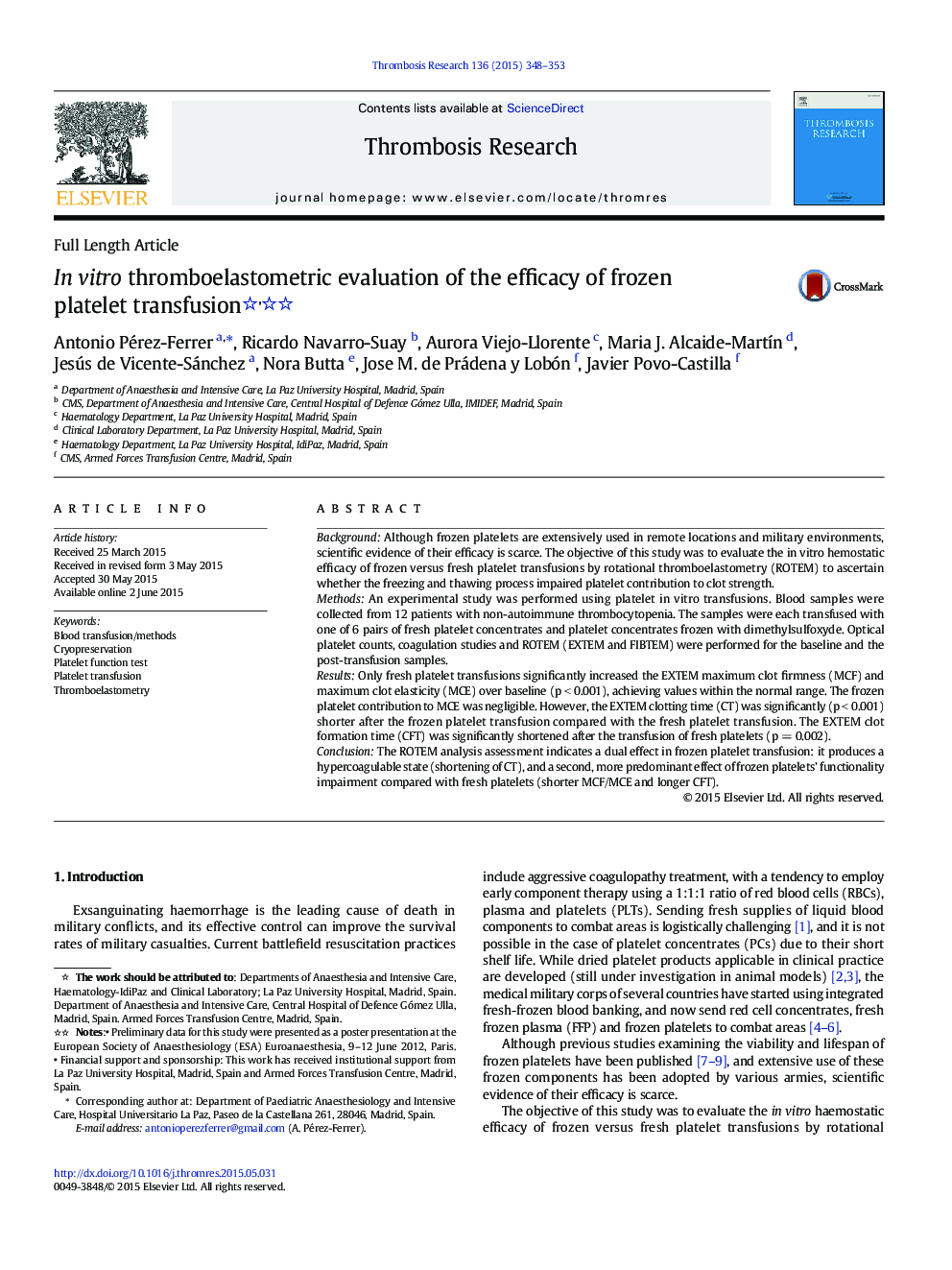| کد مقاله | کد نشریه | سال انتشار | مقاله انگلیسی | نسخه تمام متن |
|---|---|---|---|---|
| 6001309 | 1182948 | 2015 | 6 صفحه PDF | دانلود رایگان |

- Evidence of frozen platelets effectiveness is scarce.
- The ROTEM analysis assessment indicates a dual effect in frozen platelet transfusion.
- Frozen platelets transfusion produces a hypercoagulable state (shortening of CT).
- Frozen platelets' functionality is impaired (shorter MCF/MCE and longer CFT).
- In vivo studies are needed.
BackgroundAlthough frozen platelets are extensively used in remote locations and military environments, scientific evidence of their efficacy is scarce. The objective of this study was to evaluate the in vitro hemostatic efficacy of frozen versus fresh platelet transfusions by rotational thromboelastometry (ROTEM) to ascertain whether the freezing and thawing process impaired platelet contribution to clot strength.MethodsAn experimental study was performed using platelet in vitro transfusions. Blood samples were collected from 12 patients with non-autoimmune thrombocytopenia. The samples were each transfused with one of 6 pairs of fresh platelet concentrates and platelet concentrates frozen with dimethylsulfoxyde. Optical platelet counts, coagulation studies and ROTEM (EXTEM and FIBTEM) were performed for the baseline and the post-transfusion samples.ResultsOnly fresh platelet transfusions significantly increased the EXTEM maximum clot firmness (MCF) and maximum clot elasticity (MCE) over baseline (p < 0.001), achieving values within the normal range. The frozen platelet contribution to MCE was negligible. However, the EXTEM clotting time (CT) was significantly (p < 0.001) shorter after the frozen platelet transfusion compared with the fresh platelet transfusion. The EXTEM clot formation time (CFT) was significantly shortened after the transfusion of fresh platelets (p = 0.002).ConclusionThe ROTEM analysis assessment indicates a dual effect in frozen platelet transfusion: it produces a hypercoagulable state (shortening of CT), and a second, more predominant effect of frozen platelets' functionality impairment compared with fresh platelets (shorter MCF/MCE and longer CFT).
Journal: Thrombosis Research - Volume 136, Issue 2, August 2015, Pages 348-353